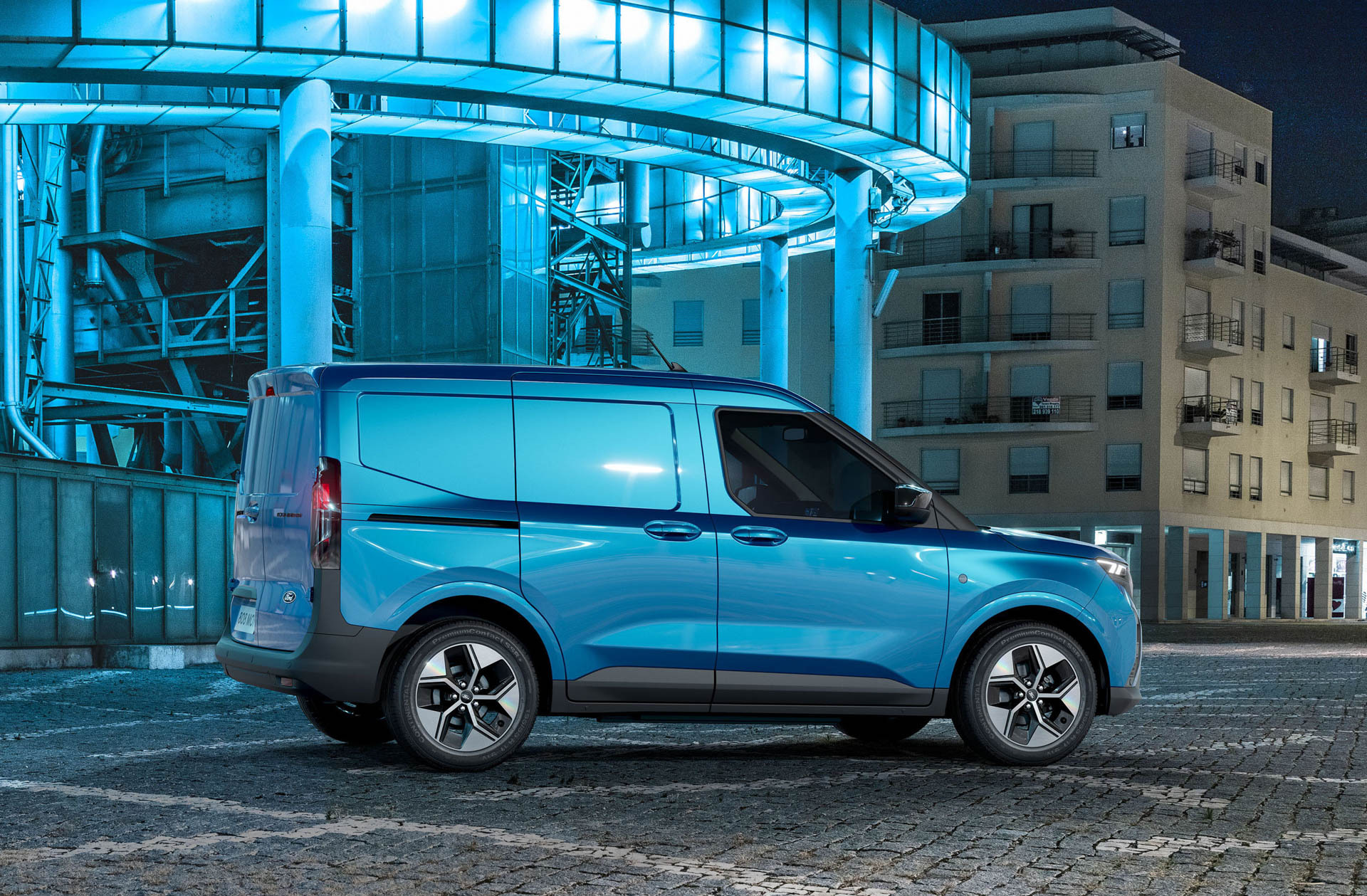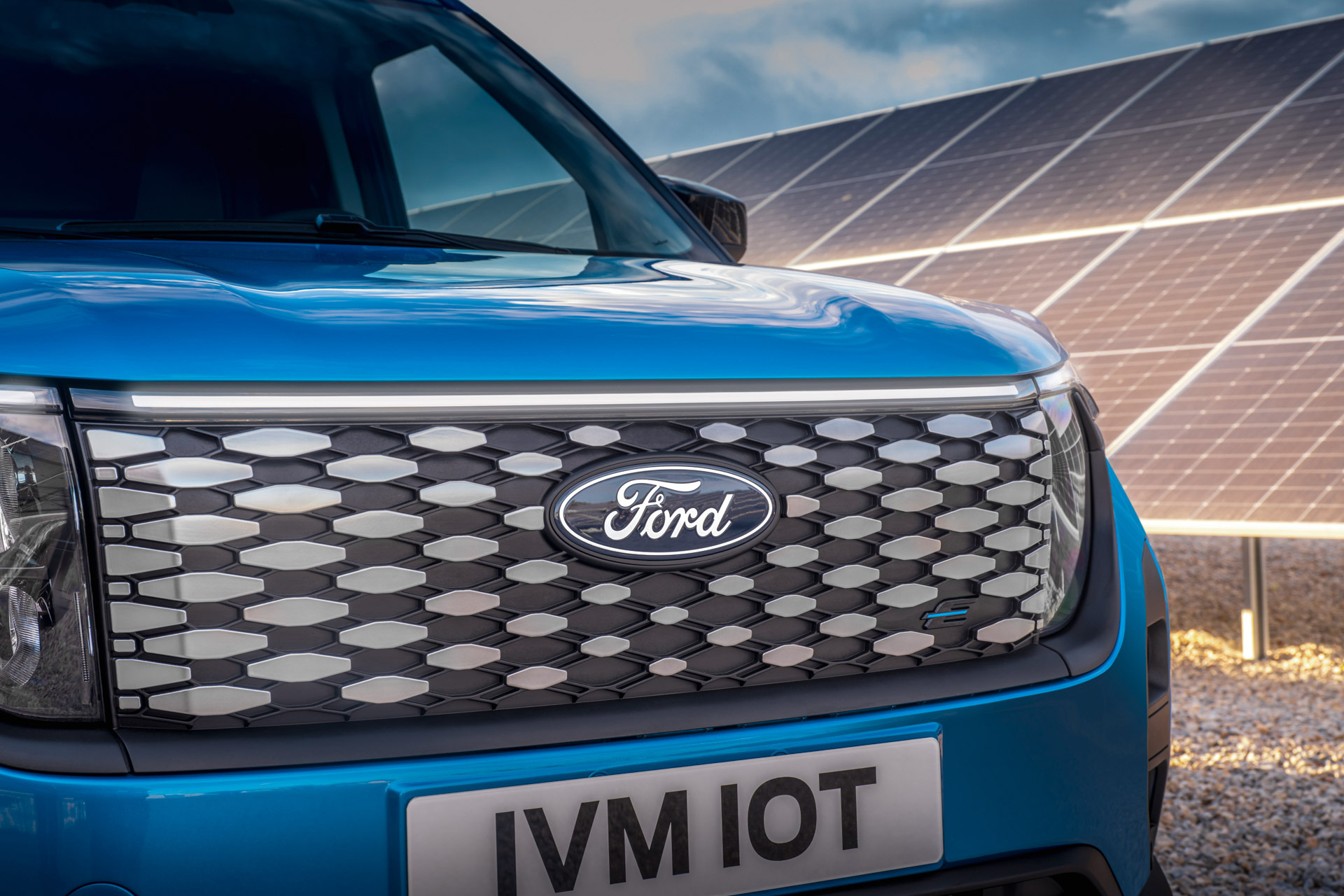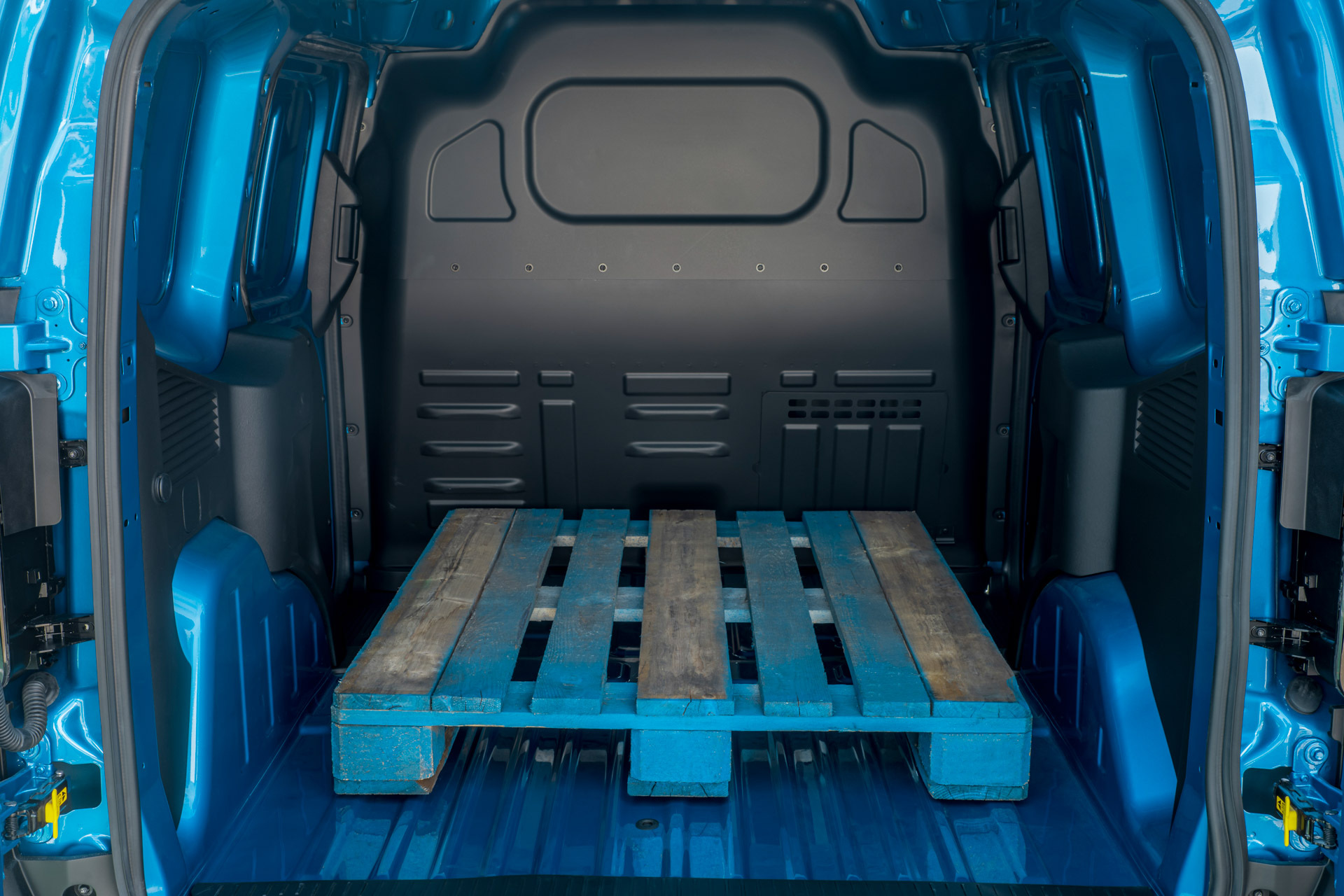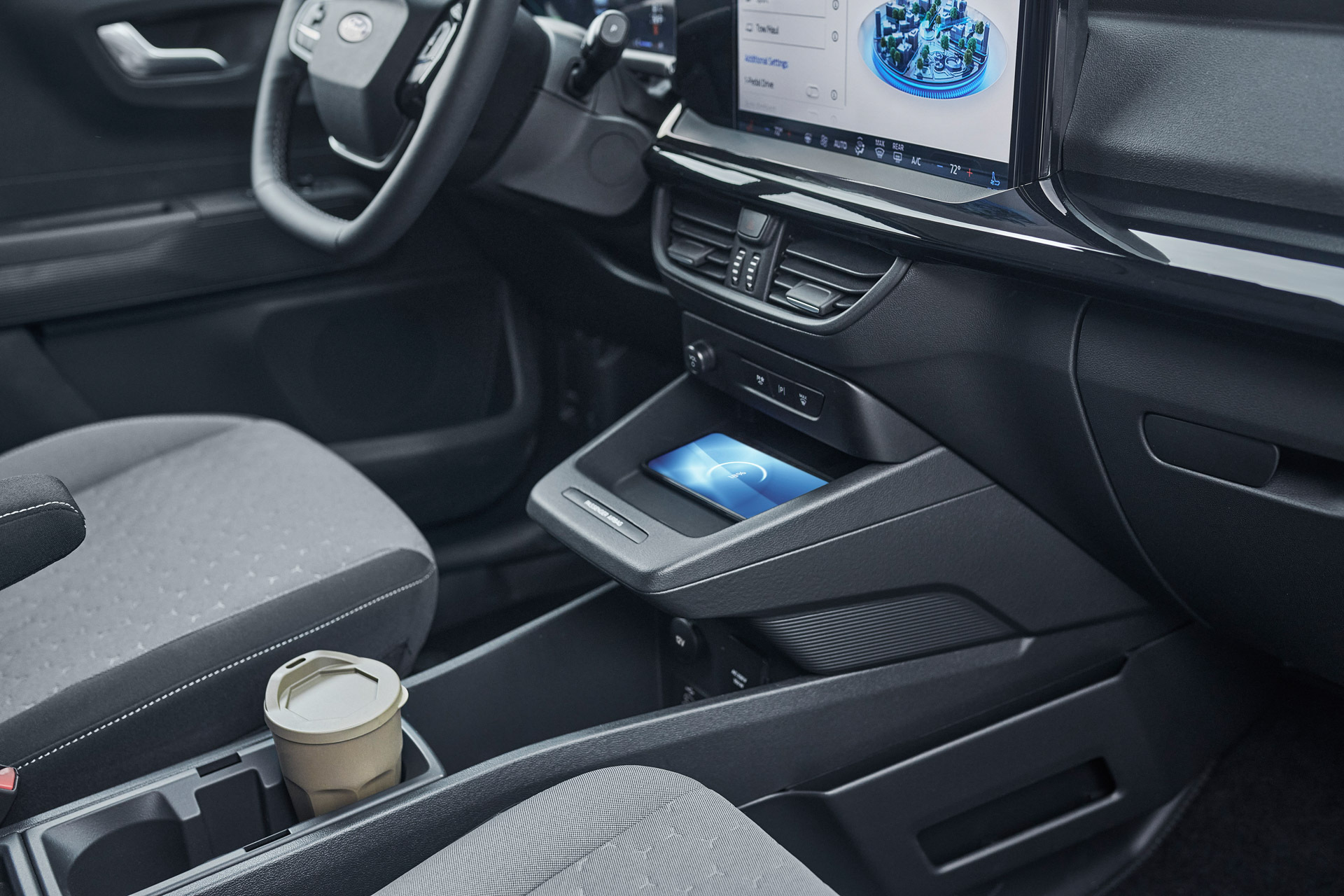Less than a month after unveiling the new Explorer EV, Ford has pulled the covers off another crucial electric vehicle aimed at European buyers, but this time the intended audience is very different.
The Courier is Ford’s smallest Transit panel van, slotting below the Transit Connect, and this all-new E-Transit Courier is the first to offer an all-electric drivetrain. Unlike the European Explorer, which borrows its platform and running gear from Volkswagen’s ID.4, the E-Transit Courier rides on Ford’s own EV architecture – the same architecture that Ford will use for the upcoming electric Puma crossover, and both vehicles will be built at the same Craiova factory in Romania.
What the baby E-Transit does have in common with the Explorer though, is its boxy shape and SUV-like squared front end that gives both EVs some serious attitude, and is a marked departure from the brand’s older, curvier designs. But it’s not just the Courier’s boxier shape that makes it look bigger than the outgoing van. It is bigger, in every dimension.
Overall length is up by 118 mm (4.65-inches) to 4,278 m (168.4-inches), but more importantly, the load area has grown. The load length at floor level now measures 1,803 mm (80-inches) rather than 1,621 mm (63.8-inches) and you can extend that to 2,661 mm (104.8-inches) by specifying the optional load-through bulkhead.
Related: Ford Is Killing The Transit Connect In America
Potentially even more useful, the width between the wheelarches has increased by 200 mm (7.9-inches) thanks to repositioned shocks, and that now allows two standard Euro pallets to fit in the load bay at the same time. Mid-height cargo rails are optional and there’s also a small 44-liter (1.56 cu-ft) frunk for the odd wrench, a sandwich or two and a charging cable for the battery.
Ford has held back quite a few technical details including the size of that battery, but we know the E-Transit is powered by a single 134 hp (136 PS / 100kW) electric motor that drives the front wheels and is limited to 90 mph (145 kmh). An on-board 11 kW AC charger will take the battery from 0-100 percent in 5.7 hours, but the maximum DC rate is a relatively pedestrian 100 kW, so a 10-80 percent fill requires around 35 minutes. But that 100 kW rate is still punchy enough to add 54 miles (87 km) of driving range in 10 minutes, which might be enough since these kinds of small vans are often used on shorter urban runs.
The E-Transit’s drivetrain can be configured for one-pedal driving, and users can also schedule charging and battery pre-conditioning via the smart 12-inch Sync 4 infotainment touchscreen, which Ford has reserved for electric versions of the new Courier. That’s right, despite the marketing push all being bending the new EV drivetrain, the smallest Transit will also be available with both petrol and diesel engines, and it’s those models that will arrive first, in fall 2023, around a year before the EV.
Some buyers might think that wait is worth it when they hear that Ford is offering two years membership of its charging network and that it expects non-scheduled maintenance costs for the EV to be 35 percent lower than for the diesel. While Ford says electric vans only currently account for 6 per cent of the commercial market, it expects that to swell to 75 percent by the end of the decade.
Combustion Couriers (shown in red above) come with either a 123 hp (125 PS) 1.0-liter EcoBoost petrol or 1.5-liter EcoBlue diesel with 99 hp (100 PS), both getting a six-speed manual transmission, while the EcoBoost also has the option of a seven-speed dual clutch ‘box. Beside the far less impressive 8.0-inch touchscreen and plain ‘Transit’ rather than ‘E Transit’ badges on the back, the combustion vans are marked out by different DRLs and a less ornate grille with conventional horizontal slats and no horizontal LED light bar between the headlights.
But Ford say that the load volume is the same whichever powertrain you go for, and that all versions can be ordered as either a simple two-seat van or as a dual-row double-cab, while a passenger-focused Tourneo derivative comes later. As does the Puma EV due in 2024, using this same platform, though we’re hoping Ford can liberate a few more hp and improve on the 100 kW DC charge rate in time for that launch.































